It may be a great struggle to try and compare the need for best compact binoculars for hiking or retrofitting. On the other side, high-quality lenses for the finest binoculars, which can be fragile often.
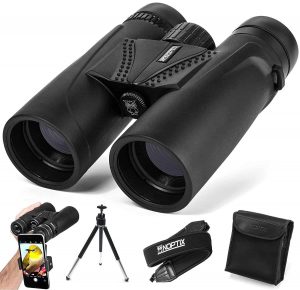
On the other side, the woods are demanding and the tools must be sturdy and lightweight. These are the challenges facing any walker, birdwatcher, and traveler in choosing the best portable binoculars.
Any of the advantages and disadvantages of certain tiny jigs would be addressed. I can also help you settle about the right way to choose small, lightweight binoculars with advanced technologies. You can also check out the Best Electric Toothbrush Cleans.
It’s not only a matter of focusing capacity to get the best binoculars. You might be able to lose that picture clarity if you are running about and have to think about weight because your binoculars do not pull you.
The 9 Best Compact Binoculars
Table of Contents
- The 9 Best Compact Binoculars
- 1. Zeiss Terra 8×25 Compact Binoculars – Best Overall
- 2. Vortex Diamondback Compact Binocular – Best for Hunting
- 3. Nikon PROSTAFF 7S Compact Binoculars
- 4. Bushnell H20 Compact Binoculars – Best Value
- 5. Celestron 71406 Small Binoculars
- 6. Leica Ultravid Compact Binocular
- 7. Wingspan Compact Binoculars
- 8. Kevenz Compact-Binoculars
- 9. Aurosports High-Powered Binoculars
- Buyer’s Guide
- Conclusion
1. Zeiss Terra 8×25 Compact Binoculars – Best Overall
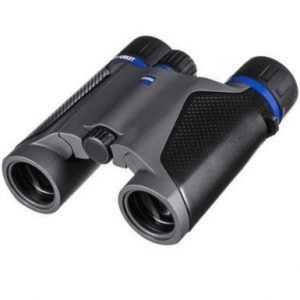
If your hobby needs to find something for birding, cycling, backpacking, and more on the latest tiny and large binoculars, take a deeper look at what the Portable Handheld Handheld Zeiss 8 Terra ED provides. It has our top selection because it packs optimal performance in a lightweight frame that you can carry without getting tired all day long.
Your main focus is photography with both binoculars and Zeiss 8 bis25 multi-coated glass lenses that creates perfectly clear pictures without any image blurring. The body is weatherproofed for high conditions, from clearly hot air to torrential rains and for some proximity to moisture. They are often quick to change and fold in a lightweight case and weigh a little more than a pound.
The price, perhaps, is the one thing you may not want. Compared to the other binoculars we examined, they are very costly. But this is a big investment if you are willing to spend your money.
Pros
- Sharp images
- Clear color
- Weatherproof
- Very portable
- Easy to use
Cons
- Expensive
2. Vortex Diamondback Compact Binocular – Best for Hunting
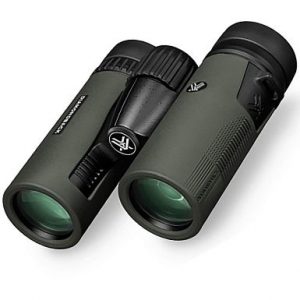
The hunting binoculars appear to be slightly larger so sharp photographs of animals are required in a slightly longer range. The Diamondback Compact is nice enough that it has the nod to help create compact binoculars. Vortex produces some of the finest shooting binoculars.
Overall, these are just a treat. They have sharp, transparent pictures with their coated lenses and high-quality prisms. The frame is long-lasting and made from non-slide rubber which does not cause water to penetrate and slide when wet. They are also portable on-the-go and lightweight.
The Diamondback is built for hunting, which ensures that it is a little bigger than a pair of normal binoculars for use such as birding and backpacking. They are almost ideal if you want the variety. There are some that are more appropriate if you need a regular collection.
- Superb imaging
- Rugged
- Fully waterproof
- Lightweight
Cons
- Only great at one thing
3. Nikon PROSTAFF 7S Compact Binoculars

The word Nikon is as sweet as gold when it comes to videos. They carry their cameras the same quality and are one of the strongest lightweight binoculars available with their 16000 PROSTAFF 7S.
In order to offer the finest quality, it has integrated the new developments in optics. You can securely keep the rubber protection patch, and the binoculars don’t fall out of the side. They are designed to win, from physical stimuli to water immersion.
The visuals should be a little sharper though they’re perfect for birding. It’s very nice what you see. Nothing is wrong with that, but the scenery is excellent in other versions.
Pros
- Good images
- Robust design
- Great for birdwatching
- Comfortable to hold
Cons
- Expensive
- Merely very good optics
4. Bushnell H20 Compact Binoculars – Best Value
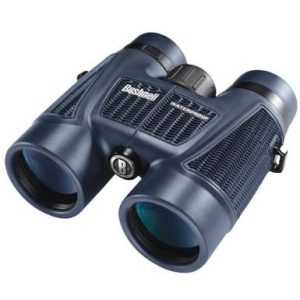
The lightweight Prism Binoculars from Bushnell H20 Waterproof / Fogproof are some of the finest portable binoculars for up to $ 100. They are our options for the highest value as a full kit.
These binoculars have a lightweight style that has been used for several decades now. They are small and carry in a single palm. Also for tiny hands and digits, they are conveniently flexible. They are often built to survive extreme weather and are rubberized outdoors to ensure that the hands do not fall out of damp environments.
Don’t expect them to deal with larger versions costing more capital. This savings was rendered from elsewhere and for optics, which still implies photography compromises. When you get your gaze on them, they are still not as relaxed.
Pros
- Great value
- Easy to use
- Well constructed
- Super portable
Cons
- Not very comfortable
- Images not quite up to snuff
5. Celestron 71406 Small Binoculars
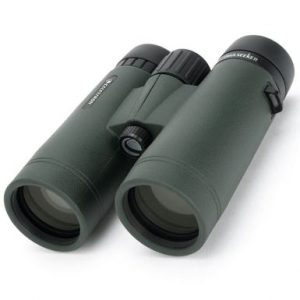
The model you’d be nearer to producing will be the TrailSeker 71406 of Celestron if you wanted to build and create a pair of binoculars that created fantastic pictures but ignored all else.
They have one of the largest viewing areas in their binoculars series, but have multi-coated lenses that guarantee that sharpness right around the boundary doesn’t decrease. Everything is tidy and smooth. They are also supported in a lightweight steel frame which can be punished tremendously without harming the internal components.
This does not come with a reinforced rubber sheet to allow it to stand ungrounded while damp and to withstand any harm as compared by some of its rivals. They are often tough to concentrate and since the optic is expensive, they come at an additional expense.
Pros
- Large field of view
- Sharp images
- Lightweight, strong frame
Cons
- Expensive
- Hard to focus
6. Leica Ultravid Compact Binocular
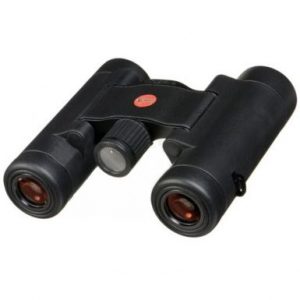
Leica’s Ultravid BRs is the strongest for low-light conditions for all the lightweight binoculars that we looked at. In overcast conditions or at the beginning or end of the day, it transforms into perfectly clear videos.
They are among the lightest we saw, coming in at a little more than half a pound. Fold it in and it falls perfectly into the hands of most citizens.
They have quite some critical hits on them for all this. The first thing is the expense. They are the most pricey handheld binoculars that we have used. They cost a lot, but they may not be prosecuted as often. The diopter – the feature that aims to put the two lenses in the same direction – holds as it comes to change.
Pros
- Lightweight and compact
- Superb optics
- Great at gathering light
Cons
- Super expensive
- Not very durable
- Diopter sticks
7. Wingspan Compact Binoculars
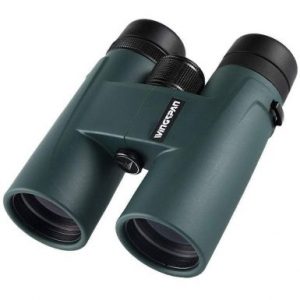
Wingspan Optics is renowned for high-end optics and its WideViews HD 8 TV package is an outstanding example. They carry the new technology, from high quality coated prisms to high-definition lenses when it comes to optics. You will like this and the large field of view if you’re searching for birdwatching, which will help you find fresh and fascinating avian friends at distances.
All of this is delivered at an affordable price. These binoculars are not the cheapest lightweight, but provide plenty of reliability.
With this in mind, the concept of “compact” continues. The frame is not so big, but weights more than other binoculars. They will weigh up to three times as much as other models in this range.
Pros
- Great imaging
- Decent value
- Designed for birdwatching
Cons
- On the heavy side
- Not on the compact side
8. Kevenz Compact-Binoculars
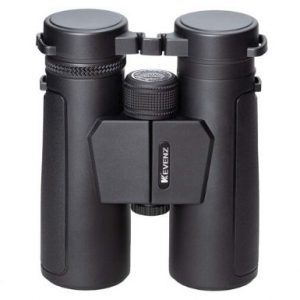
The Compact Binoculars Kevenz 10 Typ 42 is not the most economical compact binoculars we look at, but they do provide at least some compromise between cost-effectiveness and efficiency.
The integration of the new optical characteristics such as multi-coated lenses and high-quality prisms produces pictures that are good enough to compensate for expenditure.
The Kevenz are declared as waterproof on the underside, but they are not. Any people might get in if you submerge them completely in water. They still have no commercially viable low-light features.
Pros
- Very affordable
- Decent imaging
Cons
- No low-light features
- Not waterproof
- A bit on the heavy side
9. Aurosports High-Powered Binoculars
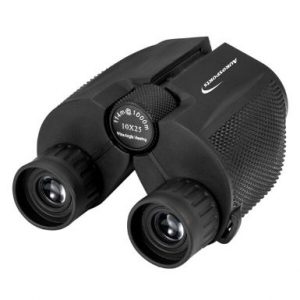
There is one item that is high powered binoculars Aurosports 10 to 25 are not and that’s big. Yeah, you can just tell that they’re solid, but the optical quality doesn’t aid.
It’s really economical what they are. They are the best binoculars that we have used. We think they look pretty good, almost like from a space fiction film set. This, too, is the problem. They pose, and they also operate as though they are an advocate. Though the picture is marketed, it’s just not all decent.
Pros
- Very affordable
- Looks cool
Cons
- Subpar imaging
Buyer’s Guide
There can be several obstacles to shopping for some form of optics. Binoculars are very problematic by their existence. Few people took the time to think about aesthetics so that they realize how they design and how anything will appear like it is right next to you, which is 1000 yards away.
We explain in this purchaser guide what the various words used for buying binoculars imply, and how they will help you make the right decision.
Magnification and objective lens size
Binoculars give the impression of a dilemma of multiplication. For starters, we will use our Top Choice, the Zeiss 8 Terra 25. The 8-fold25 is not a cumulative output equation of 200; it is a combination of two quantities.
The first one is 8x, the rise. The image you see in these binoculars is 8 times what the naked eye would perceive. Too easy! This is so easy. The rise lets you grasp the nature of the binoculars, but the greater isn’t necessarily best for you. In higher dimensions, the body’s normal motions allow the binoculars to shift about, thereby moving the photos. In general, an eight magnification is deemed almost optimal for the study of animals.
The second is almost as quick but less convenient. That is the estimation of the focal lens, which is farther from the pupils, generally in millimeters. In this situation, the magnification of these binoculars is eight, and the lens diameter is 25 mm.
Two stuff that says you. First of all, it can reach up to 50 mm and higher with the standard binocular lens. Therefore, it is a fairly lightweight objective lens 25 mm, which is what you want. Secondly, it shows you how much light it permits. The brighter it is, the stronger the binoculars are in low light. These Zeiss binoculars are very small, but they’re not going to be perfect in the dark.
The field of view has something to do with this figure. You may accept a pair of binoculars, but they are presented as a field of vision, either at feet or meters, at 1,000 feet or meters. Somewhere between 310 and 340 are typical fields of view. That’s 338 feet at 1,000 ft, for starters.
Let’s talk lenses
Two lens sets are available. As we have already noted, the goal lens is the most far-flung package. Ocular lenses are the type that is closer to the eyes. The eyepieces may also be renamed. These lenses are made of glass that has been specifically designed to maximize what you are searching for.
Since each lens is illuminated slightly at slightly different velocities (red light, shortest in the light continuum; while the lens is the longest in the visible light spectrum, the slower) it can misrepresent these different travel times as lenses create a picture. This is classified as chromatic aberrations.
To remedy these illusions, binoculars producers also undertaken to use chemicals to cover their lenses to both absorb and philter light. The effect is chromatic aberration-free pictures. The lenses may also be produced from a material known as the ED material, which irons them.
Prisms
If binoculars had to view photos from the two pictures, that will be identical to identical what you see through the eyepiece. As a consequence, binoculars canalize their creativity into internal prisms.
The porro and the roof are two styles. Porro prisms are often used in older binoculars which give the photo the length of the prism until it moves to a 90 ° prism, where it twists 90 ° which passes through the ocular lens.
While these look old-time and don’t offer the impression that they are of good quality, they still challenge the other kind of roof pricing at lower rates.
The prisms of the roof are not prisms installed on the binoculars’ top. They are sophisticated prisms formed like a house’s sloping roof. These binoculars are typically more lightweight. If you want a lightweight range of binoculars, you would definitely want binoculars that have roof prisms. They are often much more costly, have a slightly narrower panorama, and render the objective lens a little less bright.
Body construction
There is a greater benefit to roof prisms. It’s a bit more enduring. If you’re using them for hunting or cycling, that’s fine. You ought to select binoculars that fit the situation under which you are going to need them. You don’t have to be too tough if you sit in your backyard to search a bird feeder. You would like them built out of the sterner if you bring them around on the horizon to hunt elks.
One item you like to know is if your binoculars are gas covered. The binoculars have been drained from the main chamber with the oxygen to be supplemented with inert gases such as nitrogen or argon. It helps avoid water vapor from drainage and brimming from the inside of the glasses.
Make sure that you are waterproof rather than water-resistant if you intend to use your binoculars in the rain or lose them in a puddle, stream, or bath.
Finally, a decent exterior cover tends to hold the binoculars out of the water. In the event you lose them, that would also shield them. If they get muddy, it can also help you keep them hanging.
The little extras
We tend to need strong pressure on our binoculars to change the focus of attention. When it’s too loose, a soft bump will push them out from balance. This is typically the right eyepiece for the diopter modification. You should be clear you have the same concentration in your right eye and your left eye, one of which normally is better than the other.
Most jigs are fitted with a bag, a necktie, a pocket, and lens caps. Normally we do not permit these devices as creating or removal of some sort. You will still have fresh because these are stuff mostly so people worry that they are not. They are still fresh.
Price
To get a decent pair of binoculars, you don’t have to pay an arm and leg. It’s nice that you fear missing them if you put them outside. When buying, however, make sure that you get what you need from your coats, and depart from that, whether they come off whilst you’re not searching for, how much money you can afford to waste.
FAQs About Compact Binoculars
Q: Are compact binoculars any good?
A: A compact binoculars pair is the perfect solution if you try to save weight or do not have much space to transport full-size binoculars. They would not be able to absorb the same light as binoculars in full size, so the standard of optics is much more critical.
Q: What are the best compact binoculars for the money?
A: Diamond Backs from Vortex Optics is an outstanding price-quality purchase. They are really strong lenses, spray safe, fog safe, lightweight and non-slip grip.
Q: How much are good compact binoculars?
A: Premiums on binoculars are very different. You may invest less than 50 or thousands of dollars. A standard binoculars pair expects to pay at least $200. They can be identified for less, but the consistency of lens or prisms is not the same.
Q; What do the numbers on binoculars mean?
A: a binocular pair can display a number range, like 8 digits32. They reflect the magnifying force (8) and the target scale in millimeters of the binoculars. Extension implies that the entity would be far smaller or bigger.
The lens is defined by its scale as well as light can absorb. A wider lens can absorb more energy, can contribute to better and more clarity, albeit with greater reach.
Q: Are the binoculars with the highest magnification the best?
A: Some popular magnifying powers are 7x, 8x, or 10x. You can look closer and more accurate with a high magnification, but you will the field of view (FOV).
A limited field of view makes it harder to watch a pass, and when you keep the binoculars in your hands it raises “shocks.”
Q: What is FOV?
A: FOV is the field of view that corresponds to the picture distance used through the optics. The width is also defined as 300 feet at 1000 yards and 300 feet at 1000 feet, although a span of 1000 meters is often mentioned.
Conclusion
The Zeiss 8 to 24 Terra ED Lightweight Binoculars have been our favorite range from our tests. In everything that you like, they have excelled, in jigsaw the weight little enough to overlook that you are wearing them. But they are pricey. Our node to the finest shooting binookles is the Vortex Optics Diamondback Lightweight. They are mixing fantastic pictures with a non-slip rubber shield case that protects the elements and won’t remove them. They’re built for searching with longer durations. Those are more binocular than you require if you intend to search a field closely. The photos are not flawless but they are really good and the remainder of this package is more than just a consolation for it. Nikon’s credibility for the excellent optics is well ensured with the16000 PROSTAFF 7S. The Lightweight Prism Roof Binoculars Bushnell H20 is our range for the best possible performance. They’re tall, portable binoculars for less than $100, so don’t hesitate to fight for consistency or usability against the larger dogs. The TrailSeeker of Celestron 71406 is mostly about optical science. They make fantastic videos, but keep a wide range of sharpness. They are costly and challenging to concentrate, though.
The Leica Ultravid is a pricey binoculars package with decent lenses and outstanding illumination for low-light vision. However, we do not like the modification of the diopter and they are not quite robust. The Wingspan Optics WideViews have an excellent image for a reasonably affordable price. We think the whole kit drives the envelope to as lightweight as other people can see it. The compact binoculars Kevenz 10 T42 start pushing us in price towards the basement but offering a bit more value in imaging. The Eurosport 10 per 25 Folding high-powered binoculars are inexpensive and enticing, but they can’t offer the best, even optically.

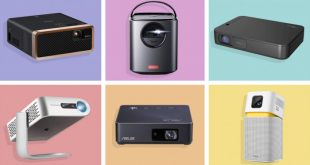
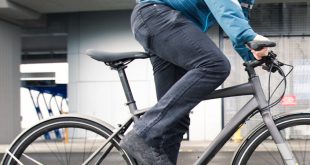

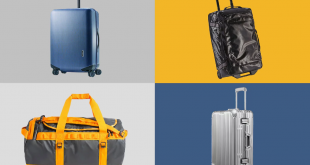
you need more to an easy review publish or clean and visible to the audience but I love that
thanks
amazing review
love that
I think this site has got some very excellent info for everyone : D. Silvie Kele Christabella
Good one review